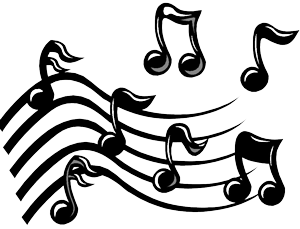Our Week 1 West Coast Swing classes in Connecticut are off to a good start. We had more new people this week. One of the newcomers even baked a cake for my birthday - it was quite incredible.
These new dancers are the incremental "life-blood" of our dance community. Combined with last month's new attendees, we have seen a 30% increase in our regular attendance. Even better, in 2015 we have exposed about 50 Connecticut residents to West Coast Swing. Some of those people have become regular dancers in our community. It feels good to watch them go on their West Coast Swing journey.
Intermediates Learning Musicality
 Musicality is one of the most important aspects of West Coast Swing. Because of the off-phrased patterns of West Coast Swing, the study of music is ultra-important to become a better dancer.
Musicality is one of the most important aspects of West Coast Swing. Because of the off-phrased patterns of West Coast Swing, the study of music is ultra-important to become a better dancer.
Most dancers don't start with something as dry as music theory for West Coast Swing. Beginners generally learn generic 6 and 8-count patterns. Eventually they are "tricked" into musicality by attending workshops with titles such as, " Hitting the Breaks" or "Phrasing Your Dance". However, these workshops only touch simplistic aspects of how music and West Coast Swing go together. Eventually, many dancers realize the importance of understanding music and seek out the crucial information that will inspire them for years to come.
One additional problem of learning musicality is that their are very few instructors who can actually teach it. There are many musicians (with some music theory background) and many West Coast Swing dancers - but, there are very few West Coast Swing teachers with any background in music theory. In fact, most professional dancers can't explain the difference between a Triple Step and a Triplet, or what is Swing. Because of my musical background (playing piano and trumpet, and growing up in a musical family), I felt qualified to expose some of my intermediate dancers to Musicality.
Musicality Powerpoint
Over the years, I have re-invented my musicality seminars countless times. This time, however, I am introducing my Powerpoint presentation which provided full graphical representation of musical and rhythmic notation without spending valuable time drawing on a white-board.
This first week of Musicality, our classes started from the beginning with a quick history summary about music. It indicated that music has been around for over 100,000 years, written music has been around for 2500 years, and our current written form of music has been in use for almost 500 years. It would be a shame not expose dancers to this. We discussed the definition of a beat and Common Time. We differentiated beats and rhythms. And, we displayed the visual representation of a 6-count West Coast Swing pattern. Most people had never seen it.
Once we had discussed some of the most introductory elements of music, we progressed to on-off beats, or "Pulsing". The basic understanding of pulsing is critical to making West Coast Swing look like Swing. Later this month, I am looking forward to exposing students to the concept of the degrees of pulsing and how triplets are involved in Swing music.
We also jumped ahead and introduced musical composition and a simplistic 2-beat extension. This aspect of the class will be significantly augmented during the next few weeks.


